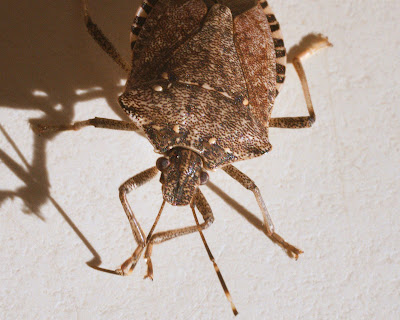Early January isn’t the best time for macro-photography – the usual subjects, flowers, insects, ferns, lichens, mosses are mostly absent and there isn’t much greenery anywhere. There’s usually a lot of bright winter sunshine in Maryland around this time, even if there isn’t much snow. It’s cold, and that adds to the challenge. Bright colors are conspicuous by their absence… one has to be imaginative, and look for interesting patterns, textures etc that might be good macro subjects.
Indoor macro-photography is another matter altogether, there’s a wealth of interesting subject matter around the house to photograph – coins, food, grains, spices, toys, gadgets, fabrics, clothing details, you name it…. However, indoor macrophotography has another problem – that of lighting. It’s hard to get enough lighting for hand-held macro photographs, unless a Flash unit is utilized. For the most part, shooting near a sunny window takes care of the lighting issue. Here are some pictures that I took of everyday objects – shoe brush bristles, fruit, a crossword puzzle, brooms etc.
Shoe brush bristles
 |
Crossword Puzzle
 |
Orange
 |
Orange
 |
Broom
 |
Broom
 |
A note about camera care – Using any camera outdoors when it is cold requires a bit of care, but digital cameras need some extra precautions… handling the little buttons is a little more difficult since numb fingers lose their dexterity. Make sure you have the camera strap securely around the neck to ensure against dropping the camera. If that’s not convenient, wrap the strap around the wrist a couple of times.
Keep the camera dry, and warm as possible. Keep it close to the body, covered with a jacket when you’re not shooting. Batteries don’t like cold conditions, and who knows what the cold does to the electronic innards? Most cameras have an “operating” temperature range specified, but I always take that with a grain of salt. Better to exercise extra care than to be sorry. Moreover, when going back inside from very cold conditions, make sure you put the camera and lens inside a large zip-lock bag so that moisture does not condense on the camera. Keep it in the bag until it reaches room temperature – at least ½ hour, if not more.
The Sony Alpha 700 has environmental sealing, but it’s not weather-proof. The seals can only prevent accidental entry of dust, sand and moisture, but I don’t think ANY camera is designed for prolonged use in adverse conditions (maybe they make special cameras to MIL specifications for the armed forces, but I haven’t come across any yet).
Enough digression – Anyway, here I was, out in the backyard, looking for interesting things to photograph… it was late afternoon, and the winter sun was already low in the sky – the light was yellowish-white and the shadows were getting longer by the minute. Here are some of the objects I found around the yard… leaves, bark, mulch, some green shoots on potted plants etc.
Tender leaves
 |
Jasmine tendril
 |
Blue Atlas Pine
 |
Cedar Pine
 |
Decayed mulch
 |
Lichen on Dogwood
 |
Electric Meter
 |
Electric Meter
 |
Leaf at Sunset
 |
Leaf, in shade
 |
I used the Sigma 50mm f/2.8 macro lens… it’s one of my favorites, I love it as much as I love my Panagor 90mm f/2.8 (that’s another superb 1:1 macro lens by Kino Precision. I can mount it on the Sony Alpha 700 with the Bower Minolta AF-Olympus OM adapter).
The Sigma 50mm is a true macro lens, and it goes up to a 1:1 magnification. The Sony A700’s crop factor of 1.5x gives the Sigma an apparent 75mm focal length, allowing it to be used from further away. This additional stand-off distance can be an advantage when it’s not possible to get too close to the subject for whatever reason… especially if they are skittish bugs…
Which brings us to this little fellow – this tree shield (stink) bug somehow made its way into the house and was wandering around. My daughter Sunayana found it and convinced her cousin Vasudev to capture it for her. We took a few pictures of the critter before letting it loose outside in the late afternoon when it was a little warmer.
I looked him up on the ‘What’s that Bug?’ site and on the Bug Guide. It’s a Stink Bug, belonging to the order Hemiptera, family Pentatomidae, and genus Euschistus. Pretty complicated name for a little bug. It’s common to see stink bugs during the summer months when there is plenty of greenery around to feed on, but what was it doing running around in mid-winter? I used the Sigma 50mm for this as well. Here are the pictures of him on the kitchen counter, and later on the deck railing. I took the last picture as he was scuttling away to find a corner.
Shield Bug
 |
Shield Bug
 |
Shield Bug
 |
Shield Bug
 |
Shield Bug
 |
Shield Bug
 |
Photographed with a Sony Alpha 700 dSLR and a Sigma 50mm f/2.8 Macro lens.

olympus/zuiko by Ajoy Muralidhar is licensed under a Creative Commons Attribution-Noncommercial-No Derivative Works 3.0 United States License.text and images © 2008 ajoy muralidhar. all names, websites, brands and technical data referenced are the copyright or trademark of their respective owners. thank you for visiting olympus/zuiko.


You must be logged in to post a comment.